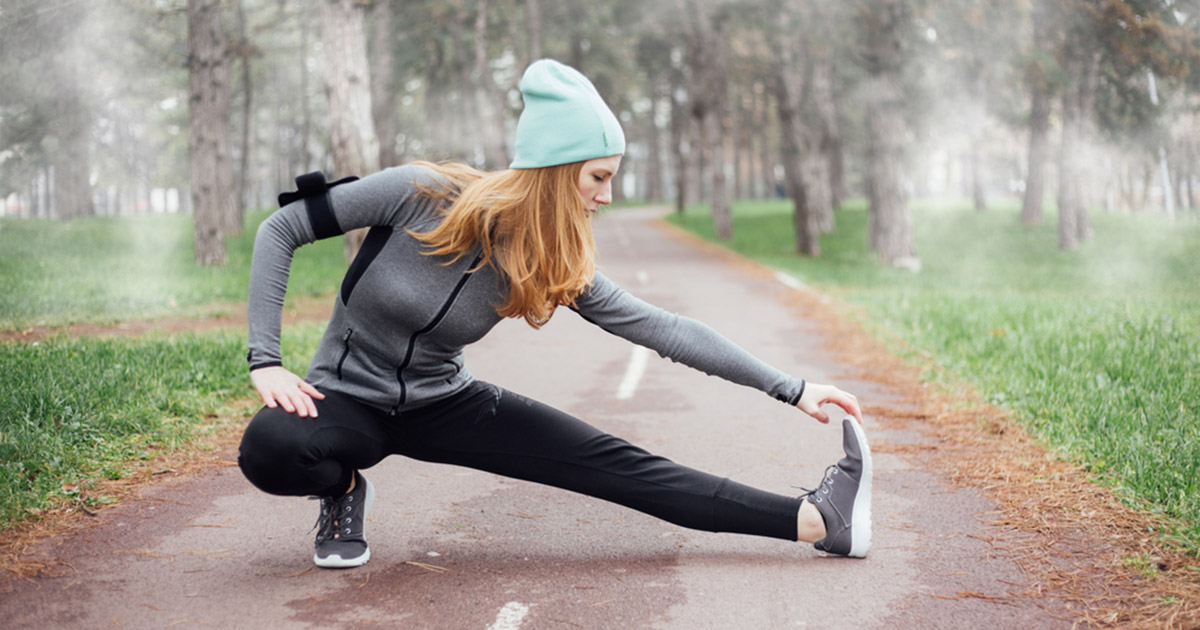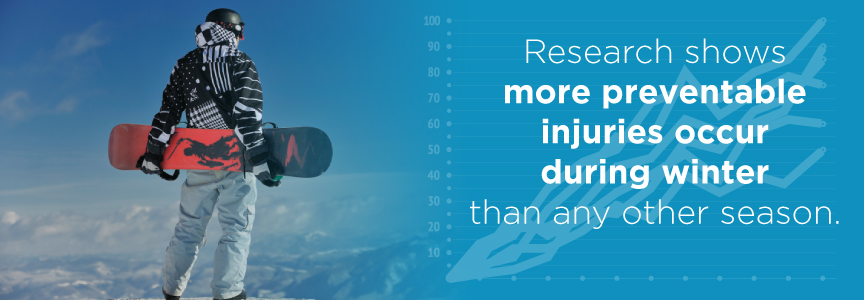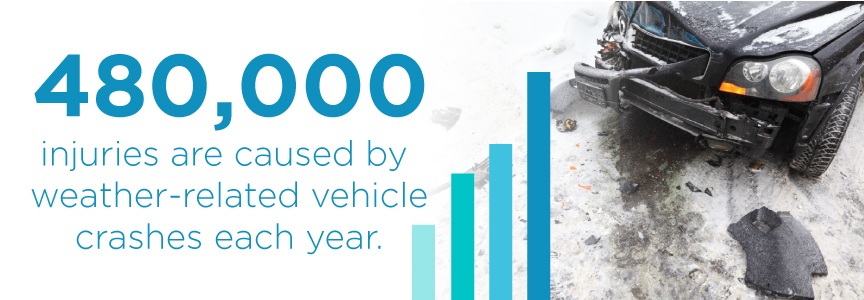
Welcome to WinnerTrick.com — the best source for success and personal development articles, motivational quotes, and tips to live your best life.
contact@winnertrick.com
Winter has a way of sweeping us up in its whirlwind of activity. With festive gatherings like family dinners, end-of-year parties, holiday shopping marathons, and the general excitement that wraps the season, it’s no surprise we often lose focus on our personal well-being. The distractions come fast and loud, and before we know it, taking care of ourselves slides quietly to the bottom of the priority list.
When all the celebration fades, a common pattern emerges—our motivation to stay physically active begins to drop. Some people find themselves weighed down by post-holiday bills or the emotional lull that sets in after the festivities. For others, nutritional habits take a hit, with balanced meals replaced by quick fixes and comfort food. And let’s face it—when the temperatures plummet and the sun sets early, curling up on the couch seems far more appealing than hitting the gym.
Shorter daylight hours and cold air can chip away at our resolve to stay fit. But that seasonal apathy can come at a cost—weakening the immune system, slowing metabolism, and making the body more vulnerable to illness or injury. There’s a reason the term “winter blues” exists, and it’s not just about mood.
What often goes unnoticed are the everyday safety hazards that winter introduces. Icy sidewalks, indoor fire risks, and even reduced visibility during early sunsets—all create an environment where health and safety can take a backseat if we’re not careful.
But here’s the good news: identifying potential risks and habits that compromise health can empower you to act. Prevention, preparation, and intention are your best defense. There’s a wealth of practical strategies and cold-weather wellness habits to draw from. The ones we’re going to cover will help you spot weak points in your routine and take steps to boost your physical and mental health—all while staying safe.

Let’s be real—most of us don’t get injured slipping on ice. The more dangerous threat to our health during the winter is how easily we let go of our healthy routines. With the holidays looming large and to-do lists growing longer than a snow-covered driveway, health-conscious choices often become afterthoughts.
Our schedules become saturated with year-end work deadlines, travel arrangements, and endless errands. Add in family obligations, cooking, wrapping, and social events, and you’ve got a recipe for mental and physical burnout. Exercise sessions are replaced with Netflix marathons, and healthy meals give way to convenient carb-heavy comfort food. The warmth and coziness of indoors becomes our excuse to stay sedentary.
Unfortunately, this pattern opens the door for more than just seasonal weight gain. A sedentary lifestyle, especially during winter, can weaken immunity and drain energy levels. Cold and flu viruses thrive in this environment. Studies estimate that nearly 20% of the U.S. population catches a cold or flu during this season alone. A sharp dip in physical activity and nutritious eating habits can leave your body less equipped to defend itself.
To help you stay ahead of the curve, here are proven diet and workout habits designed for winter survival—both physically and mentally.

Winter tends to trigger cravings for dense, starchy foods—think pastries, bread, and creamy dishes. There’s a biological reason for this: carbs boost serotonin levels, which temporarily lifts mood. As daylight fades, the desire for this comfort increases. But giving in too often can lead to sluggishness and unwanted weight gain.
Start your day with a breakfast that’s high in protein and healthy fats—like eggs, avocado, or Greek yogurt. It helps stabilize your energy and reduces afternoon snack attacks. For those mid-day cravings, keep a stash of smart snacks on hand: trail mix, boiled eggs, or apple slices with almond butter. If food isn’t cutting it, get moving or step outside for natural light—both help increase serotonin naturally.
Winter brings joint stiffness, inflammation, and for many, seasonal sadness. One of the best dietary weapons against these issues? Omega-3 fatty acids. Found in fatty fish like salmon and mackerel, as well as chia seeds, walnuts, and flaxseeds, these healthy fats support brain function, reduce inflammation, and can ease symptoms of mild depression.
If fish isn’t a regular part of your diet, consider a high-quality omega-3 supplement after consulting your physician. Just a few servings a week can go a long way in protecting your heart, joints, and mental balance throughout the colder months.

Mushrooms are more than just an earthy addition to your pasta sauce—they're immunity powerhouses. Varieties like shiitake, maitake, and reishi contain compounds that act as natural antibiotics. They stimulate the immune system and help fight off viruses and bacteria. Include them in stir-fries, soups, or roast them for a hearty side dish. It’s a simple, tasty way to give your defenses a seasonal boost.
Soluble fiber—found in foods like apples, lentils, oats, and almonds—plays a big role in immunity and digestion. It helps regulate blood sugar, supports a healthy gut, and reduces cholesterol. During winter, when immune responses are tested, fiber acts like an internal stabilizer, keeping your system strong and steady.
For older adults especially, high-fiber foods help prevent digestive issues and lower the risk of chronic illness. Add fiber-rich ingredients into soups, stews, and smoothies for a no-fuss nutritional lift.
Bright orange and deep green vegetables are nature’s multivitamins. Carrots, sweet potatoes, kale, and spinach are packed with antioxidants like beta carotene and vitamin C. These nutrients help your body combat free radicals, repair tissue, and maintain healthy skin and vision—especially important when cold weather and dry air set in.
Roast them with olive oil and spices, blend them into soups, or toss them into grain bowls to make winter nutrition colorful and satisfying.
If your winter meals are starting to feel repetitive, it’s the perfect opportunity to bring your spice rack to life. Beyond taste, spices like garlic, turmeric, ginger, and cilantro carry serious health perks. Garlic and onions are loaded with compounds that enhance immune function and fight infection. Ginger aids digestion and reduces inflammation, while turmeric’s active component—curcumin—has been linked to better heart health and reduced chronic pain.
Integrating these spices into soups, teas, marinades, or even smoothies can elevate your meals and your wellness simultaneously. Think of them as your kitchen’s natural pharmacy.
Winter routines have a sneaky way of falling apart when not pre-planned. To stay consistent, create a weekly exercise plan every Sunday evening. Outline which workouts you’ll do on specific days—whether it’s cardio, bodyweight training, yoga, or brisk walks—and how long you’ll commit to each session.
Keeping your goals visible and structured makes them harder to ignore. Pair up with a friend for added accountability. Having a workout partner makes it harder to back out, especially on those extra cold mornings when the couch seems extra tempting.
If venturing out in the cold isn’t your thing, don’t worry—you can get a great workout without stepping outside. There’s no shortage of online fitness videos and apps offering routines that range from five-minute stretches to full-hour sweat sessions.
From HIIT to pilates to strength training with household items, you can build a full-body routine using YouTube channels, fitness blogs, or mobile apps. Pinterest boards are packed with beginner-to-advanced routines that require zero equipment. Bonus: you can work out in pajamas if you want.
Looking for a more playful way to get your heart rate up? Motion-based gaming consoles like the Nintendo Wii Fit or Ring Fit Adventure for the Switch offer surprisingly effective exercise alternatives. These platforms feature guided workouts that target strength, cardio, flexibility, and even mindfulness.
Gamifying your fitness routine can make it feel less like a chore and more like entertainment. It's a great option for families, too—turning movement into quality time. Set goals within the app and track your progress over time to stay motivated.
These winter-friendly exercise and diet tips aren’t just for the colder months. Many of them are great for year-round wellness and can help keep you grounded through seasonal transitions. If you remind yourself that spring is right around the corner, it becomes much easier to keep your habits in check and your body in motion.

Despite the joys winter brings, it also introduces a unique set of hazards. From slippery roads to overloaded circuits and heating-related fires, the season demands extra attention to personal and household safety.
The combination of increased indoor time and unpredictable outdoor conditions means that accidents—both minor and severe—are more common in the colder months. And with celebrations and late-night parties in the mix, the risk of impaired driving spikes, too.
Here are essential tips to help protect yourself and others during winter’s cold grip:

Each year, nearly half a million accidents are linked to weather-related conditions. Before winter gets into full swing, get your car inspected. Ensure your brakes, tires, fluids, and windshield wipers are ready for icy commutes.
In mountain regions or areas that experience heavy snow, winter-specific tires are often required by law—and they could save your life. For rainy climates, tires with high hydroplaning resistance are key. Also, always keep your windshield washer reservoir filled with winter-grade fluid. A dirty windshield can become a major hazard fast when visibility is already poor.
Holiday parties are fun—until someone makes a reckless decision. If you plan to drink, arrange your transportation before the night even begins. Schedule a rideshare pickup or designate a sober driver. It’s a simple step that can prevent tragedies. Encourage friends and coworkers to do the same. It only takes one poor decision to ruin lives.
Ladders, electrical cords, and fragile décor can be a dangerous mix. Always use stable, undamaged equipment when retrieving or hanging decorations. And those twinkling lights? Turn them off before bed. Most holiday lights heat up quickly, especially older or non-LED strands. Set them on a timer if needed, but don’t let them run overnight unattended.
Nothing beats the warm glow of a fire during a snowstorm—but safety first. Always extinguish candles before leaving a room or going to sleep. If you have a gas or wood-burning fireplace, make sure it’s fully out before bed. Electric fireplaces should be turned off before heading out or turning in.

Space heaters, electric blankets, and heated pads can be lifesavers when temps drop, but they also account for a large percentage of winter house fires. Use these devices with care—never fall asleep while they’re on. Turn them off and unplug them before bedtime, and don’t cover them with blankets or let them sit on flammable surfaces.
Winter months see a spike in residential fires and carbon monoxide incidents. If your detectors haven’t been tested recently, now’s the time. Replace batteries, check expiration dates, and consider installing interconnected detectors for better coverage. Make it part of your seasonal prep—just like pulling out coats and scarves.
Cold, wet weather makes outdoor stairs slick and dangerous. Whether it’s rain, snow, or ice, always use handrails—even if you feel steady. This is especially important for elderly family members and kids. Slips and falls can happen in a blink, but using handrails can prevent serious injuries.
Thanks for the clarification — I’ll continue with Part 3 of the article exactly where we left off and complete the remaining sections in full.
Cold air doesn’t just make your nose tingle — it also has a noticeable impact on how your lungs function during exercise. When temperatures dip and your breathing rate increases from physical exertion, you might notice a stinging sensation in your throat or chest. That’s because frigid air is usually quite dry, and inhaling it irritates your respiratory system.
“In colder conditions, your airways tend to narrow, making it harder to breathe,” explains Debi Pillarella, an expert with the American Council on Exercise. To ease this discomfort, try to breathe through your nose whenever possible. Your nasal passages help to warm and humidify the air before it hits your lungs. But when your effort level ramps up and nose-breathing just isn’t practical, a fabric layer like a scarf or lightweight mask over your mouth can trap some moisture and heat — easing the shock of cold air and making breathing easier.
One of the more common winter workout mistakes? Wearing too many layers and then overheating. Sure, it’s cold when you step outside, but if you’re exercising at a steady pace, your body will warm up rapidly. Sweating heavily in sub-freezing conditions is risky — excessive dampness against your skin makes you more prone to dehydration and can even lead to frostbite if temperatures are low enough.
Jeff Galloway, a veteran Olympic runner, warns that people often delay removing layers until they’re soaked in sweat — and by then, it’s too late. His advice: as soon as your body feels naturally warm, start peeling off a layer. Tie it around your waist or stash it in a backpack, so you can re-layer later if needed.
It’s also worth noting that the intensity of your activity should dictate your wardrobe. Runners, for example, generate more body heat than walkers and may only need a fraction of the layers someone else might require.
Don’t be fooled by cooler temperatures — hydration is just as important in winter as it is in summer. The chill in the air can suppress your sense of thirst, but your body is still losing water through sweat and the moisture in your breath. And if you’re breathing harder during a workout, that water loss can be significant.
Jeff Galloway recommends sipping water throughout your session and switching to an electrolyte-based sports drink, such as Gatorade, if your workout extends past 90 minutes — especially if you’re not supplementing with energy gels or chews. But be cautious: your body can only absorb a few ounces of liquid at a time, so there’s no need to chug large amounts all at once.
A simple hydration check? Pay attention to your urine. According to Pillarella, dark color, low volume, and infrequent trips to the restroom are signs you’re dehydrated. On the flip side, clear, high-volume urine might indicate you’re overdoing it.
Here’s a strategic tip for looped workouts like running, cycling, or cross-country skiing: tackle the wind head-on at the beginning. When you start out, your energy levels are high, and you haven’t built up a sweat yet. Facing the wind during this time reduces the risk of cooling down too fast later.
Jeff Galloway explains that when your body is warm and sweaty, turning into the wind on the return trip can rapidly decrease your core temperature, increasing the risk of hypothermia. So plan your route accordingly — push against the wind early, then let it guide you home as a tailwind when you’re most vulnerable.
After you’ve crushed a cold-weather workout, it might be tempting to skip your cooldown and rush inside. But don’t skip this step. Winding down your activity gradually helps regulate your heart rate, reduces the risk of dizziness, and allows your muscles to flush out waste products that could otherwise cause soreness.
Jeff Galloway cautions that going from a strenuous workout to a sudden stop puts unnecessary stress on your heart. Instead, use the last 5 to 10 minutes to slowly taper down your effort, followed by gentle static stretches — the kind where you hold each position for 15 to 30 seconds.
As soon as you’re done, it’s time to ditch those damp clothes. Wet gear holds onto cold and pulls heat away from your body. Swap into something warm and dry, hit the shower, and get cozy.
Make sure you enter all the required information, indicated by an asterisk (*). HTML code is not allowed.